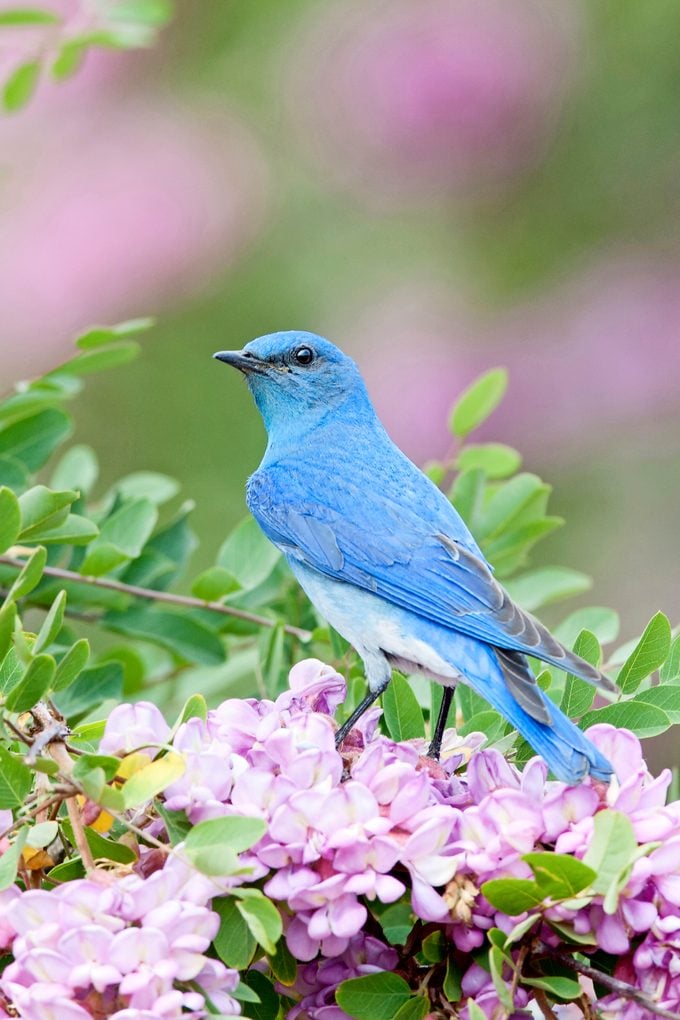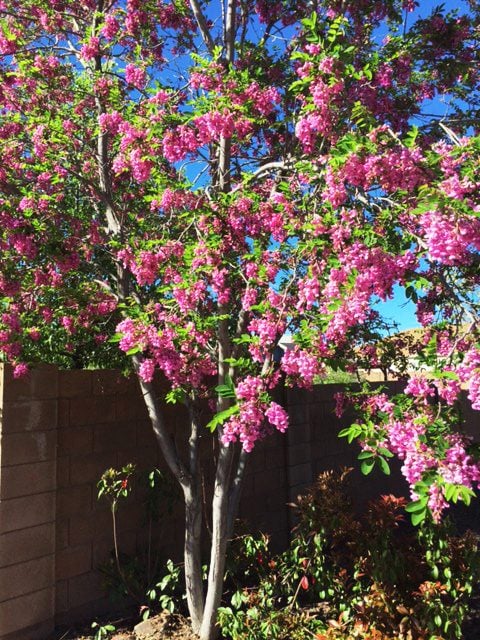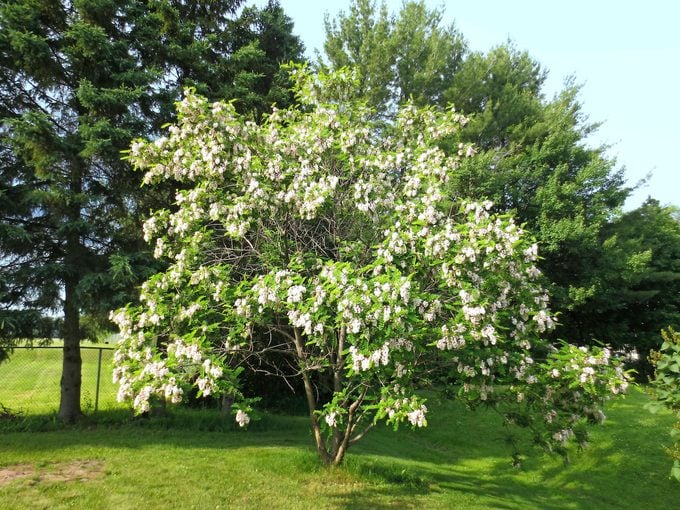Is a Black Locust Tree Invasive?
Updated: Feb. 13, 2023
Stunning blooms are beloved by pollinators, but this tree is not a good choice for every yard. Find out if a black locust tree is invasive.
What You Need to Know Before Planting a Black Locust Tree

A Purple Robe black locust tree (Robinia pseudoacacia) blooms for about 10 days in late spring. Extremely fragrant, 8-inch, dense flower clusters attract swarms of bees. Locust trees are also a host plant for the silver-spotted skipper butterfly.
However, although it’s native and attractive to pollinators, this Purple Robe black locust is not recommended in some areas. Visit invasiveplantatlas.org to see what’s right for your particular location. Then read below to find out what a garden expert says about growing a black locust tree.
Discover 15 trees you should never grow in your yard.
Ask the Experts

“Our backyard tree (above) is a total mystery to us. The leaves come out first, then beautiful pink blooms in April. Do you know what kind of tree this is?” asks Diane Robinson of Prescott Valley, Arizona.
Gardening expert Melinda Myers: This pink flowering locust is either Purple Robe black locust (Robinia pseudoacacia) or Idaho locust, which flowers 14 days later. Purple Robe grows 30 to 40 feet tall and 20 to 30 feet wide, while Idaho is a bit shorter at 15 to 30 feet. Both are hardy in Zones 4 to 9 and perform best in full sun. They tolerate a wide range of soils and are drought-tolerant once established. Remove suckers as they appear, to prevent this plant from taking over. Do your research before planting one of these, because they are considered invasive in some areas.
Don’t grow an invasive Russian olive tree in your yard.

This beautiful tree (above) blooms in early summer in northern Ontario. Can you tell me what it is? asks Lorna Shepherd of Echo Bay, Ontario.
Melinda Myers: Don’t let the beauty of this tree fool you. This is a black locust tree (Robinia pseudoacacia). It’s native to the U.S., but it has escaped the landscape and is considered invasive or a noxious weed in much of the U.S. and Canada. The tree produces fragrant flowers that are followed by seed-filled pods, which help it spread so well. Unfortunately, it forms dense thickets in natural areas, crowding out other native plants. Because of this, I wouldn’t recommend encouraging it or planting it in other areas.
Is an Amur Maple shrub invasive?
Backyard Tip
If you find a mystery tree that you want to identify, be sure to take pictures of the leaves, blooms and bark. This will help an expert figure it out.
Next, find our favorite native trees that attract birds.




















